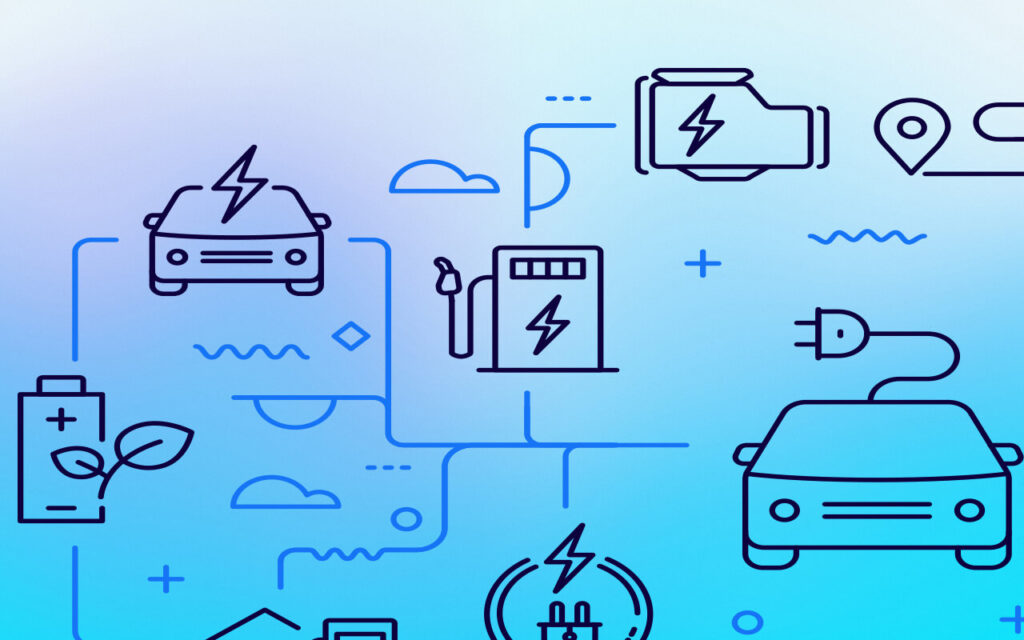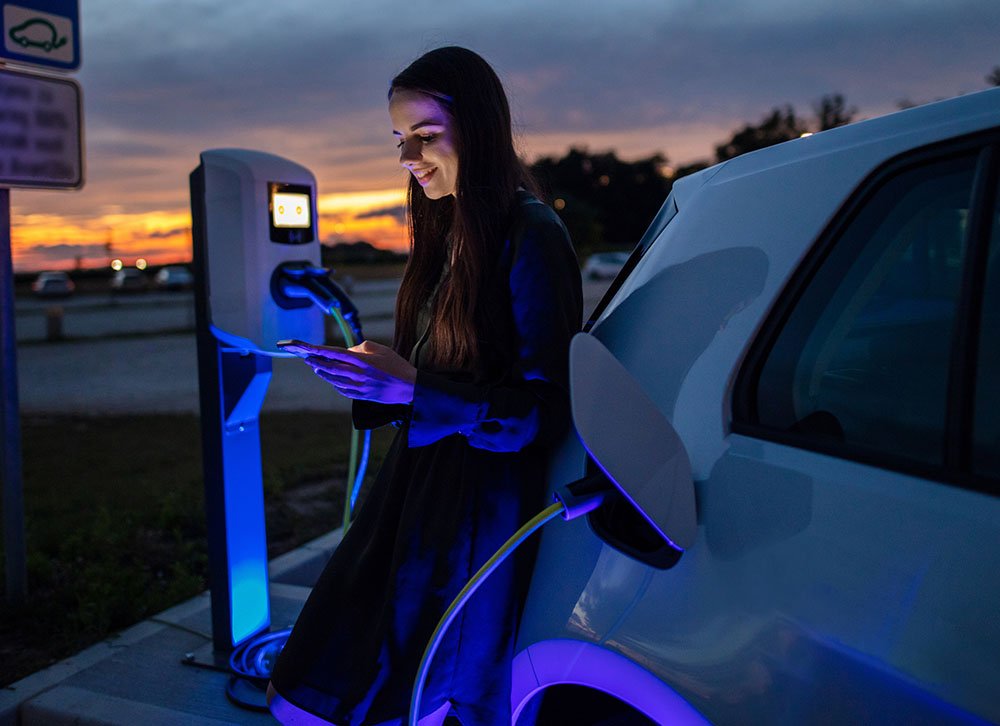Major auto manufacturers are committing extensively to electric. This signals confidence in a post-combustion era. As adoption rates continue rising worldwide, EVs transformative economic and environmental disruption potential is gaining clarity. This text chronicles EVs remarkable emergence, analyzes their widening real-world impact across multiple dimensions and spotlights key recent developments underscoring their inevitable dominance as the future of personal mobility.
Evolution of Electric Vehicles

Source: skill-lync.com
Electric vehicles have been in the public consciousness for over a century, laying the early foundations for environmentally sustainable transportation. As far back as the 1890s, silent electric taxis dotted the congested streets of New York City – evidence that the concept of battery-powered cars predates the contemporary green movement. However, the meteoric rise of Henry Ford’s pioneering mass-produced Model T coupled with abundant cheap gasoline in the early 20th century led to electric cars falling out of favor with consumers.
The Modern Era
It wasn’t until the 1960s and 70s when environmental consequences became mainstream discussion that electric vehicles sparked public intrigue again. Though inventors and smaller automakers created prototypes, most faced limitations around range, speed and power – hindering mass appeal.
The radical two-seater General Motors EV1 in 1996 marked a watershed, being the first highway-capable electric car from a major manufacturer. Its premature discontinuation reiterated lingering consumer skepticism. Yet, the launch kicked off a renewed era of innovation.
Boeing’s lithium battery breakthrough soon thereafter helped pave the way for modern, highly performant electric vehicles. The stage was set gradually for the electric mobility resurgence experienced globally today and the forthcoming mainstream revolution forecasted over the coming decades – a century since electric technology first touched public roads and imagination.
Current State of EV Market
In 2020, the global EV fleet rose by 43% to 10 million vehicles. Yet back in 2015 there were just 500,000 EVs on roads worldwide.
This exponential rise can be attributed to the confluence of several factors over the last decade, including plummeting battery costs, expanding charging infrastructure, and favorable government policies across the world aimed at incentivizing the transition from fossil fuel vehicles to cleaner electric alternatives.
The sheer variety and sophistication of models offered by market leaders like Tesla, coupled with burgeoning competition from native automakers, especially in China, have significantly reinforced consumer faith in embracing sustainable technology – punctuating a new chapter in the future of mobility.
EV Charger Installation and Repair

Source: pcmag.com
While EV adoption is rising, robust and efficient charging infrastructure is crucial. Home charger installation involves purchasing the station and professional installation. Companies like ChargePoint, Blink Charging and Tesla provide various charger models suiting different vehicles.
Like any electrical appliance, chargers may need repairs over time from regular wear and tear. EV owners should consult certified EVSE technicians specialized in these repairs, ensuring safety and performance efficiency. A visit to a qualified electrician will furnish you with installation and repair details for home EV chargers.
Role of Government in EV Advancement
Governments worldwide play a pivotal role in supporting EV adoption through funding, regulations, tax credits and incentives. Norway leads as an excellent example, with EVs comprising about half of all vehicles on its roads due to extensive tax breaks for owners.
Additionally, stricter emission standards compel automakers to manufacture more EVs or risk significant fines – policies that have proven critical in spurring EV sales and motivating substantial investments in new models.
Consumer Attitudes Towards EVs
Perceptions of EVs have likely shifted over recent years. Once considered nonviable options with limited range and costly price tags, today they are seen as premium performance cars offering advanced tech within reducing costs.
With rising climate change awareness, surveys indicate around 45% of US car buyers now consider an EV for their next vehicle – evidencing changing attitudes towards cleaner transportation.
Global Adoption of Electric Vehicles

Source: adlittle.com
Nordic countries spearhead global EV adoption, with over 50% of Norway’s new car sales being electric powered. China too is progressing rapidly, becoming the largest EV market.
Motivated by government incentives and policies, EV switching is accelerating worldwide – highlighting a broader transition towards greener transportation globally. Per Bloomberg’s 2022 Energy Outlook, EVs may comprise 58% of new passenger vehicle sales by 2040.
The Competitive Landscape in EVs
Analyzing the EV industry landscape, Tesla is pioneering given its sophisticated models encompassing luxury sedans and SUVs – reiterating EVs can be stylish and high-performing.
However, competition is heating up. Legacy automakers like GM, Ford and Volkswagen are expanding into EVs substantially. Additionally, tech giants including Apple and Google are rumored to be developing autonomous EVs, focused on future mobility concepts.
China’s thriving EV ecosystem poses serious competition too, with domestic players like BYD, NIO and Li Auto challenging overseas automakers. These dynamics make the EV competitive landscape incredibly exciting.
Future Projections for EV Market
Future projections paint an optimistic picture for the global EV market. Experts predict that by 2026 there could be over 54 million electric vehicles sold annually around the world compared to 3.24 million registered in 2019. Moving forward beyond personal transport, you could also see a surge in electric-powered commercial vehicles (buses, trucks) and even e-bikes.
Growth drivers entail continued investment from automakers and governments, better charging infrastructure plus falling battery costs translating into more affordable EVs. Qualified EV charger installers such as The Local Electrician will inevitably play a part in building the necessary charging infrastructure. And with companies breaking through tech limitations around range anxiety – an often-cited consumer concern, there’s no limit on where the electric future could lead.
Potential Hurdles for EV Growth

Source: arenasolutions.com
No revolution is sans hurdles and the rise of electric vehicles isn’t any different. A significant issue comes out as ‘range anxiety’ – concern regarding an electric vehicle’s ability to cover ample distance before it needs recharging. Although tech advancements are bridging this gap, a widespread network of charging stations is indispensable.
Apart from infrastructure challenges, another hurdle is the upfront cost of EVs. Despite reducing battery costs, they still remain significantly higher than conventional vehicles, deterring budget-conscious buyers.
Supply constraints on rare materials used in EV batteries, e.g., lithium and cobalt, pose another obstacle for growth. Securing ethical and sustainable supply chains for these resources is crucial yet challenging.
Investment Opportunities in EV Space
The booming electric vehicle market extends beyond just car manufacturers when it comes to investment opportunities. Domains like battery producers, raw material suppliers for batteries (copper, lithium), and developers of charging infrastructure bear significant prospects.
In addition to investing in stocks of leading EV companies and their suppliers, another avenue lies in various clean energy or electric vehicle ETFs- a collection of investments related to electric vehicles which offer diversification for investors.
It’s also worth noting that as more autonomous driving features are integrated into electric vehicles, firms providing sensors, semiconductors and software solutions stand a chance to benefit as well. Thus the EV wave presents a plethora of investment avenues encompassing a wide gamut of industries.
Brief Wrap-up
To put it succinctly, the march towards a greener transportation future with electric vehicles looks unstoppable today. A myriad of factors ranging from climate change concerns to technological advancements are fueling an international EV revolution.
Despite some evident roadblocks such as charging infrastructure inadequacy and high initial costs, continuous innovations coupled with substantial governmental support are propelling the market’s growth.



